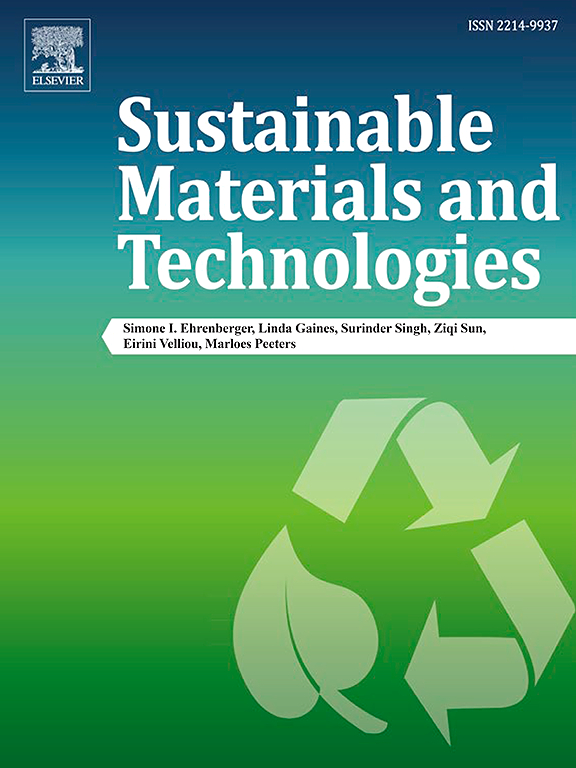Controlled synthesis of porous carbon materials from cow dung biomass and analysis of their adsorption properties: Modulation of lignocellulosic fractions and pore structure formation
IF 8.6
2区 工程技术
Q1 ENERGY & FUELS
引用次数: 0
Abstract
Globally, a large amount of agricultural waste is generated every year, and improper disposal can lead to serious environmental pollution. In particular, due to the expansion of large-scale cattle farming, the accumulation of large quantities of cattle manure can cause various environmental problems. Using agricultural waste, such as cattle manure, to produce porous carbon materials can enhance its resource utilization while mitigating its environmental impact. Accordingly, in this study, porous carbon materials were synthesized by partially degrading the lignocellulosic fractions in cow dung through a series of processes, including NaOH pretreatment under varying conditions (concentration, time, and temperature), pre‑carbonization, and KOH activation. Furthermore, the pore-formation mechanism of the porous carbon materials was analyzed in three stages: NaOH pretreatment, pre‑carbonization at 600 °C in an N2 atmosphere, and KOH activation. Key factors influencing the structures of the materials were changes in the contents and linkages of cellulose, lignin, and hemicellulose. Among the tested samples, the pretreated CA-4-6-70 sample demonstrated the lowest lignin content and the highest cellulose content. Following pre‑carbonization and KOH activation, the specific surface area of this material reached 1402 m2/g, with a microporous area of 912 m2/g. Furthermore, the porous carbon materials synthesized in this study exhibited good CO2 and methyl orange adsorption performance, demonstrating their potential for applications in environmental pollutant treatment.

牛粪生物质多孔碳材料的可控合成及其吸附性能分析:木质纤维素组分和孔隙结构形成的调节
全球每年都会产生大量农业废弃物,处理不当会导致严重的环境污染。特别是由于大规模养牛业的扩张,大量牛粪的堆积会引发各种环境问题。利用牛粪等农业废弃物生产多孔碳材料,既能提高资源利用率,又能减轻对环境的影响。因此,本研究通过不同条件(浓度、时间和温度)下的 NaOH 预处理、预碳化和 KOH 活化等一系列过程,部分降解牛粪中的木质纤维素组分,合成了多孔碳材料。此外,还分三个阶段分析了多孔碳材料的成孔机理:此外,还分析了多孔碳材料在三个阶段形成孔隙的机理:NaOH 预处理、在 600 °C 的 N2 大气中预碳化和 KOH 活化。影响材料结构的关键因素是纤维素、木质素和半纤维素含量和连接方式的变化。在测试的样品中,经过预处理的 CA-4-6-70 样品木质素含量最低,纤维素含量最高。经过预碳化和 KOH 活化后,这种材料的比表面积达到了 1402 平方米/克,微孔面积为 912 平方米/克。此外,本研究合成的多孔碳材料具有良好的二氧化碳和甲基橙吸附性能,证明了其在环境污染物处理方面的应用潜力。
本文章由计算机程序翻译,如有差异,请以英文原文为准。
求助全文
约1分钟内获得全文
求助全文
来源期刊

Sustainable Materials and Technologies
Energy-Renewable Energy, Sustainability and the Environment
CiteScore
13.40
自引率
4.20%
发文量
158
审稿时长
45 days
期刊介绍:
Sustainable Materials and Technologies (SM&T), an international, cross-disciplinary, fully open access journal published by Elsevier, focuses on original full-length research articles and reviews. It covers applied or fundamental science of nano-, micro-, meso-, and macro-scale aspects of materials and technologies for sustainable development. SM&T gives special attention to contributions that bridge the knowledge gap between materials and system designs.
 求助内容:
求助内容: 应助结果提醒方式:
应助结果提醒方式:


